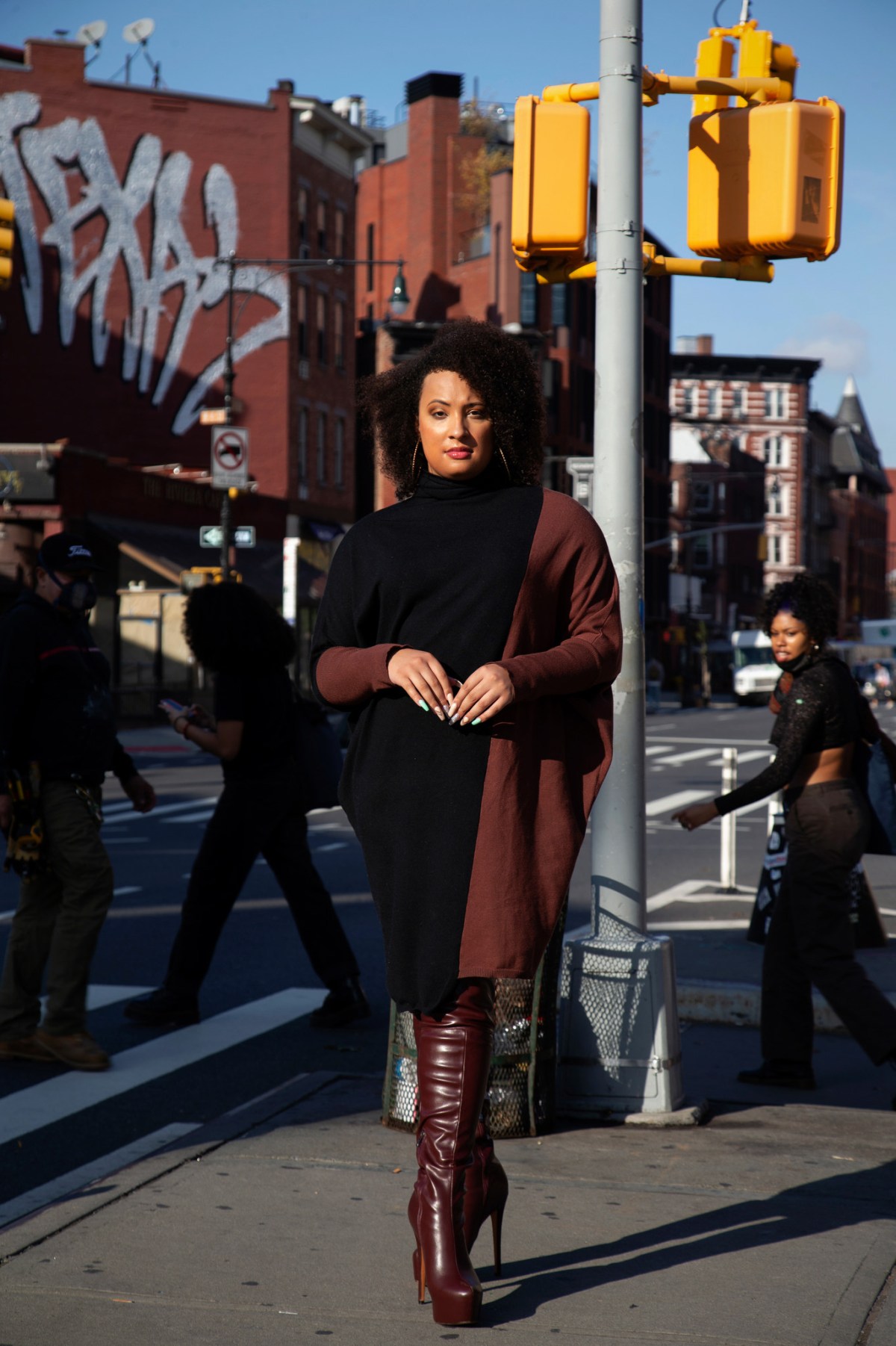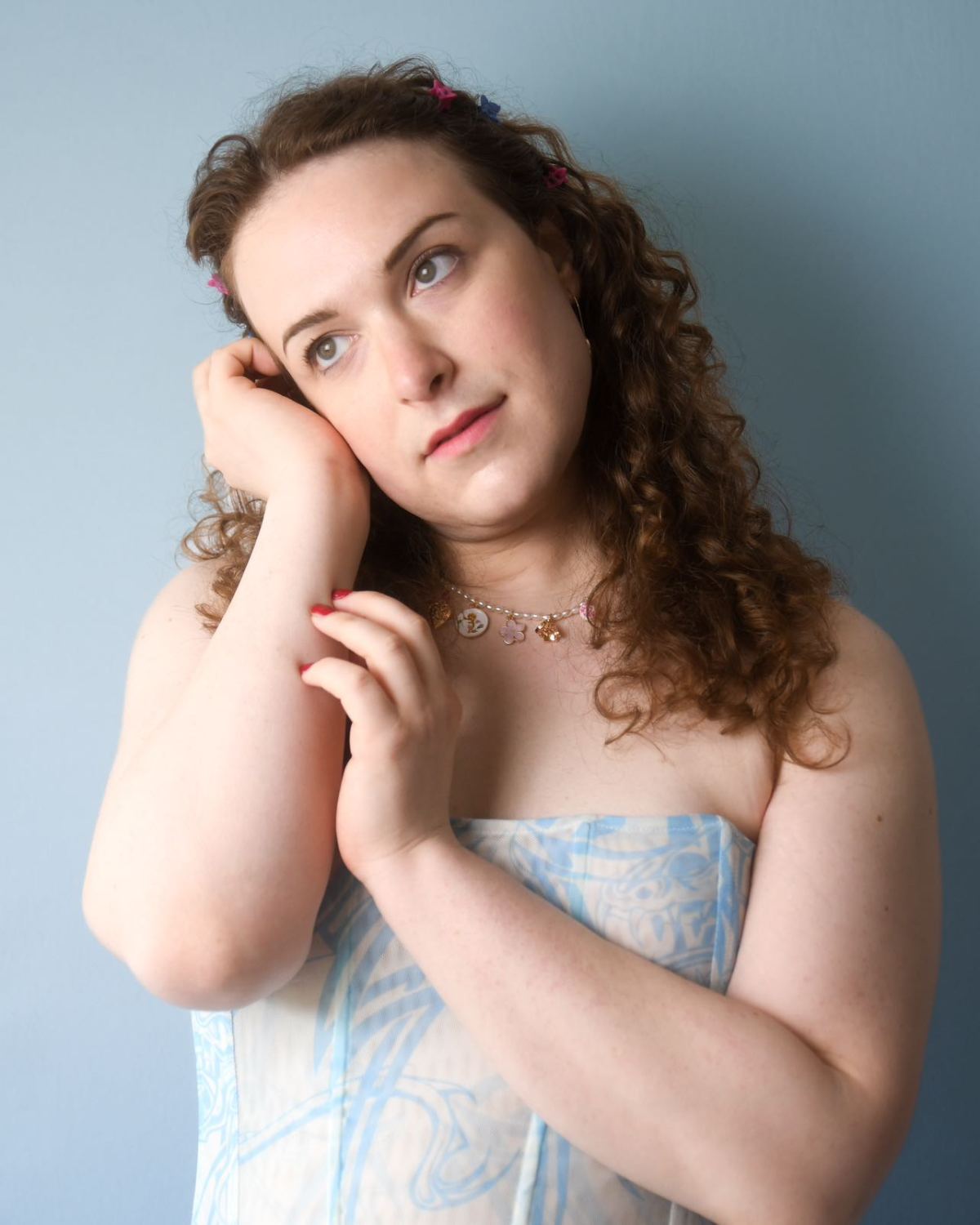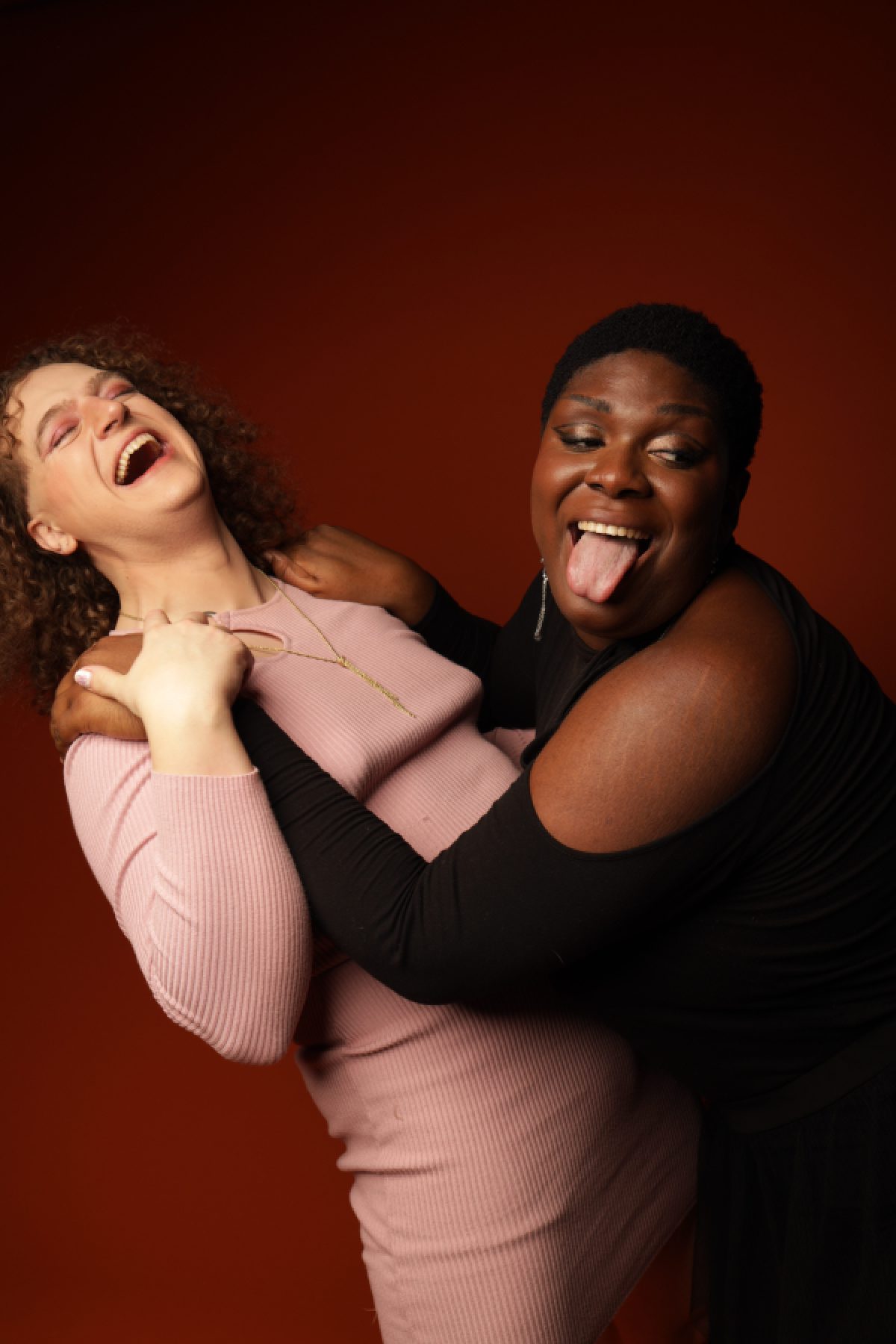When I came out as gay at 14, I knew that wasn’t the full picture. In fact, I came out to myself as a girl long before I knew anything about sexuality. But it was less of a gamble to exist as an effeminate gay boy in the 2010s than as a trans girl, especially in the red counties surrounding St. Louis, Missouri.
After finding the necessary safe spaces — and the courage — to embrace my true gender, my sexuality became a question mark once again. Was I actually attracted to men, or did I only date them because of societal expectations of women? Was I really into that guy I met at a nasty bar in Williamsburg last week, or do I just feel affirmed by his advances? Did I want to mess around with that douchebag I met at a block party, or did I want more than a late night booty call?
There’s much to unpack in all of those questions. Thanks to years of therapy, Dee Rees’s Pariah, Haley Jakobson’s Old Enough, Mae Martin’s Feel Good, Syd’s entire discography, and a lot of 7 a.m. FaceTime calls to all of my closest friends, I found some answers. Am I still a messy bitch? Every now and again, I just might be. But one thing’s for certain, I am extremely queer.
I struggled to accept my pansexuality because often when discussing my sapphic nature with different people, they turned their noses up at me. Since the early 2010s, “sexuality is a spectrum” has become a common phrase in the zeitgeist — this hasn’t included trans people. Many assume that all trans women are attracted to cis men while trans men are attracted to cis women. In the mainstream imagination, i.e. the cis imagination, trans people can only be heterosexual. These notions have persisted and been reinforced throughout history. For example, Harry Benjamin, an influential 20th century endocrinologist and sexologist, insisted that trans women be straight in order to undergo gender affirming surgery. Historical facts like this make me wonder how many trans people had to perform aspects of their gender and sexuality to obtain necessary medical intervention — and how this impacted our understanding of transness today.
I have often wondered how other trans women came into their queerness whether they are bi like me or lesbians. My first sapphic relationship was the most transformative relationship I’ve been in thus far. As I’ve spoken to other trans women about their sapphic relationships, the same applies to them. Every journey is nuanced and nonlinear, and the more I spoke to my trans sisters, I learned just how vast our experiences can be.
“There was always an attraction to women, but I just didn’t think anyone would be interested in me,” actress, activist and organizer Ianne Fields-Stewart tells me at a noisy cafe in Downtown Brooklyn.
Like me, Ianne grew up in a conservative town and stood out for her feminine attributes. “Everyone was calling me gay, so I thought that was the only route I could go down.” Born and raised in Birmingham, Alabama, she was initially confused by her gender and sexuality. Women expected her to perform masculinity and manhood in a way that contradicted her true self, but it did not negate her attraction toward women. “I had to answer the question of my gender before I could answer the question of my sexual orientation. When I dated men, I based my gender off of who I was sleeping with. That was where I could play that out.”

Ianne Fields-Stewart
Actress Garnet Williams, a Georgia native, had comparable experiences. “I was always into women. Being from Atlanta, I was into darker girls and bigger girls, but those girls had a specific idea of what men they were supposed to be into. I never fit that. There was always a lil’ sweetness to me.” Garnet gives me a knowing smirk. Sweet is a term common in the Black community mostly for those of us with Southern roots like me, Garnet, and Ianne. It’s both a term of endearment and a derogative for people assigned male at birth who are attune to their femininity. It’s most often ascribed to young effeminate boys. “When I came of age, I gave attention to the people who liked me, and it was always cis men. I believed that men were the only people who would ever want me.
Expectations of masculine gender performance also stopped me from ever engaging with women prior to my transition. I was a teenager, but even then, I could feel the weight of what they wanted out of me.
“I can look back on all the relationships I had,” says Esther Fallick, a New York-based comedian and performer, “and I can see who wanted a man and who just wanted me. Those were really bad because I was never going to be able to give them a man.”
While in college, she dated women whom she always felt attracted to and tried to find comfort in relationships with men. That wasn’t cutting it for her. When with women, she felt better but still knew something was off. “I was attracted to the right people, and I was with the right gender. It was this slow process of realizing I wasn’t being seen as the right gender.”
Esther’s initial “egg crack” was during her last relationship before starting her transition. Her ex-girlfriend called her beautiful. “I could never believe anyone when they called me handsome, but when she called me beautiful, it would fill my lungs with air.” At the time, she was presenting as a cis man, but these affirming compliments gave her the confidence to explore her femininity and in turn, her womanhood.

Esther Fallick
As Garnet began her transition, it became even more apparent that men were her only option, but then she got hired at A League of Her Own, a legendary queer women’s bar in Washington, D.C. One night while running around the five-floor space with friends, Garnet walked off the dancefloor and saw a blonde mane pulled back into a tight bun. This woman passed Garnet on the stairs, turned around, looked at her, smiled and said hello.
“The whole room shifted. In my head, I’m thinking, ‘Do I know her?’ Like, I would think I’d remember a blond trans girl that I’m friends with, but I don’t know this woman at all.” Garnet and the mystery girl begin talking, and then suddenly “this girl is maybe an inch away.” Pinned up against a huge poster of Marsha P. Johnson and Syliva Rivera marching, the blonde girl kissed her. “I often joke that my life now is a romcom, but that was the start. You would have thought that a Smash Mouth song started. Like, ‘hey now, you’re an all-star.”
This woman continued to kiss her and gush about Garnet’s beauty in a way that Garnet had never experienced before. At the time, she was still figuring out her gender and had not fully embraced her trans womanhood, but this moment became a pivotal catalyst to her full self-actualization. The next morning when she awoke next to this woman, she watched the sun pour in from the windows and felt an ease and intimacy like never before.
“At that moment, I said to myself, ‘If I can be like this, I don’t need to pretend to like anything else.’ That is the day that I stopped with cis men.”
Since then, Garnet has welcomed all aspects of her sapphic nature including her gender expression. “I am a darker-skinned Black trans woman who is almost six feet tall,” says Garnet. “Even cis women who look like me are not afforded femininity in the same way.” As a proud Black trans butch, she has faced flack from family members and other people in the trans community. Once upon a time, those negative comments got to her, but now she loves every bit of it. “But now I’m like, let me be a brick. You need bricks to lay a foundation. I’m not a true masc lesbian. That’s not my T, but when I say it’s bedtime, you’re going over my shoulder.”

Garnet Williams
Ianne’s views on lesbianism are somewhat similar to Garnet’s. Both found solace living in New York where the openness of the city makes it easier to explore sexuality and gender as opposed to the more conservative mindsets down in Georgia. “As a trans woman, lesbian is about how I understand my gender as completely separate from men. I don’t ascribe my gender to perform for men. It gives me space to say that my attraction and my identity exists outside the bounds of what a man finds desirable. [It’s] much more based on how I love myself and who reflects that love in me.”
Two people I met who reflect love in each other are Cherry Jaymes and Victoria Foster. I’ve seen them out and about at queer bars in Brooklyn, and I’ve always admired their relationship. Seeing two trans women love each other is a powerful sight to behold.
“When Cherry and I walk into a room, nobody’s ready for that,” Victoria tells me over Zoom with Cherry. “No one’s ever ready to see two hot trans women holding hands in a dedicated relationship to one another–even other trans people.”
The two met on Grindr in 2018, but during lockdown, Victoria came to Cherry and came out as a trans woman. Cherry helped guide Victoria along her journey and the two grew into their newly-realized lesbian relationship together. For Cherry, she wasn’t surprised by Victoria’s womanhood, but she did have to take a pause. “I had never been with a woman before. The newness of it scared me.” However, as time went on, Cherry realized just how peaceful their relationship was and how at home she felt with Victoria. “I’m bi-sex-ual, but lesbian when it comes to love and dating. I can fuck anybody, but men won’t ever have the gravitas to love a woman in the way I need.” Almost six years strong, Cherry and Victoria see a bright future with one another.
“I was into Cherry the same way I had been into women my entire life,” Victoria says with a smile on her face. “She met me as a guy, I transitioned while we were together and we grew together to become the trans lesbians we are today. But it’s not even about that for me. I just like Cherry. We met each other as different people, but we loved the same person the whole time.”

Victoria Foster and Cherry Jaymes



Those photos! And so many good lines
This is the one that got me:
“I said to myself, ‘If I can be like this, I don’t need to pretend to like anything else.’ “
Those photos! And so many good lines
This is the one that got me:
“I said to myself, ‘If I can be like this, I don’t need to pretend to like anything else.’
Those photos! And so many good lines
The level of my fascination with your work matches your own enthusiasm. Your sketch is elegant, and the authored material is impressive. Nevertheless, you appear concerned about the prospect of heading in a direction that could be seen as dubious. I agree that you’ll be able to address this concern promptly.
Love these profiles! And the photos really are stunning